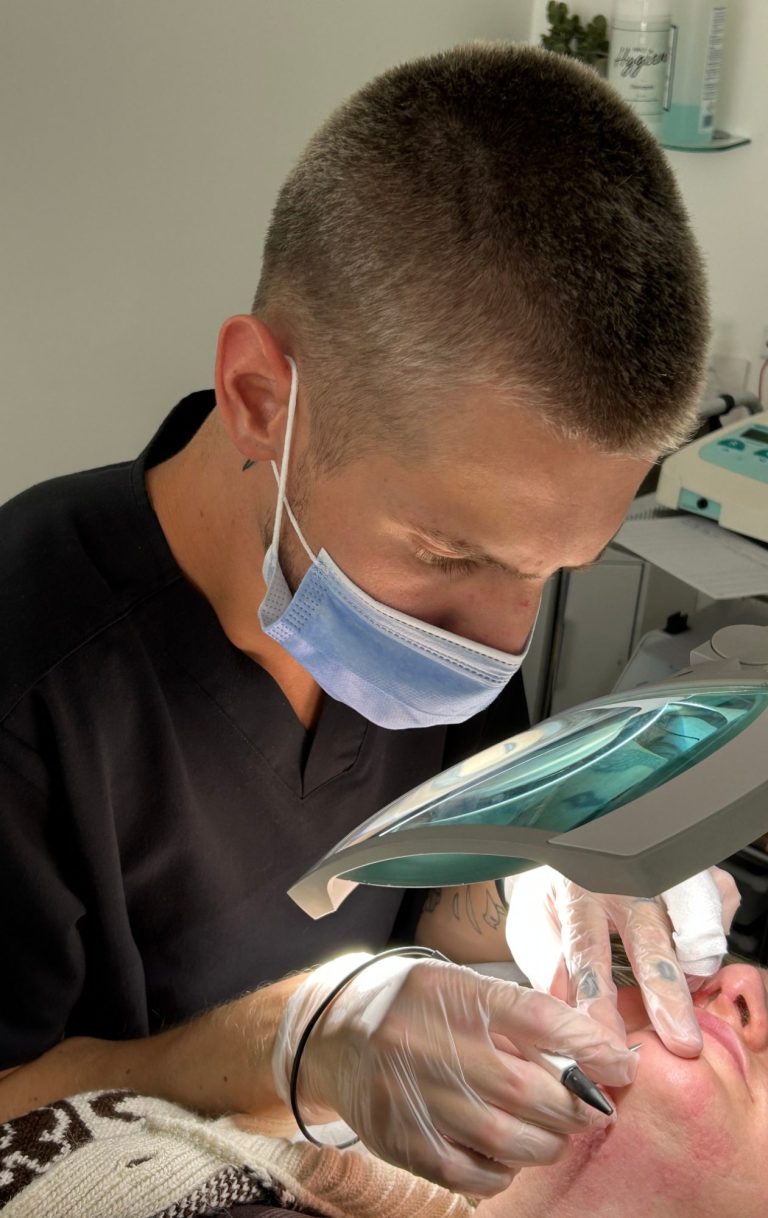Frequently Asked Questions
Q: Do I need a consultation?
A consultation for electrolysis will last up to 60 minutes and cost £25. During the consultation, we will gather all necessary information, such as medical history, medication, and previous treatments. We will also discuss and create a personalised treatment plan, provide pre and post-treatment advice, and offer free aftercare support with all the necessary information to care for the treated area. We will also discuss hair growth and different electrolysis methods tailored to each client. To determine the most suitable method, a patch test using different electrolysis methods will be performed. It is important to have at least 3 days of hair growth in the treatment area for a successful patch test.
Please note that even if a client has had electrolysis done elsewhere, a consultation is still required.
Q: Is Electrolysis permanent?
Electrolysis is the sole permanent method of hair removal. It involves multiple treatment sessions, gradually making the hair finer and reducing the time it takes to regrow. It is crucial to seek a skilled and experienced practitioner.
Q: How does Electrolysis work?
A small probe, similar in size to an eyelash, is inserted into the follicle. A small amount of current is applied at the follicle's base, resulting in a slight sensation of heat and tingling. The hair is then gently removed from the follicle without pulling or tugging.
Q: What methods of Electrolysis are there?
There are three electrolysis methods: galvanic, thermolysis/short wave diathermy, and blend. Galvanic, the first method used in 1875 by Dr. Charles Michel, involves producing a chemical reaction called sodium hydroxide or lye. Thermolysis/short wave diathermy produces heat, and flash is another option with this method. The blend method combines both currents. During the consultation, all methods will be used to determine the most suitable and comfortable option that removes hair without traction and causes minimal skin trauma.
Q: Is Electrolysis painful?
Pain thresholds vary among individuals and are influenced by the specific area and sensitivity of their skin. Many clients experience a sensation of heat and tingling during the treatment, which may be slightly uncomfortable. The treatment is customised to accommodate each client and specific area, and can be adjusted as needed from session to session. A proficient electrolysist will regularly assess and modify the treatment as necessary.
Q: What areas can be treated by Electrolysis?
Electrolysis is primarily used for facial hair removal, including the upper lip, chin, neck, sides of the face, ears, and eyebrows. Additionally, it can also be used for body hair treatment, such as the bikini area, abdomen, underarms, shoulders, and back.
Q: How long does the hair need to be for treatment?
The hair should be tweezer-friendly for easy removal after treatment. After treatment, the hair is gently removed from the follicle using tweezers. There should be no pulling or tugging, as it will effortlessly slide out. If the hair is excessively long, trimming may be necessary for better manageability.
Q: Is an appointment needed?
Appointments are necessary for all treatments.
Q: Is treatment hygienic?
The treatment is conducted with utmost safety and hygiene. Personal Protective Equipment (PPE) is worn, and all materials used are disposable and disposed of as clinical waste.

Q: Does Electrolysis work on white hairs?
Electrolysis works on all skin types and hair colours, including white and red hairs.
Q: How long until the hair is gone?
Several factors will influence the treatment outcome, including the treated area, previous hair removal methods, skin recovery, hair type (terminal or vellus), treatment frequency, hormonal issues, and medication usage. While the hair will gradually become finer and take longer to regrow between treatments, the exact time frame varies for each client, making it difficult to provide a specific timeline.
Q: How much does treatment cost?
The treatment page of the site provides up-to-date pricing information.
Q: How can I maintain the hair between treatment?
To avoid stimulating hair growth, opt for methods like cutting smaller areas and shaving larger areas, as they only remove hair from the skin surface without promoting regrowth. Temporary methods like tweezing, waxing, epilating, and threading should be avoided as they remove hair from the root, potentially increasing blood supply to the area and promoting regrowth. If feasible, refrain from removing hair between treatments.
Q: How will my skin react following treatment?
After treatment, expect mild swelling and redness in the treated area, which will quickly subside. Avoid applying makeup to the area for 24 to 48 hours. Properly executed treatment should not result in scarring, and once all the hairs have been successfully treated, the skin will become smooth.
©Copyright. All rights reserved.
JHD Electrolysis Clinic, Urmston, Manchester
We need your consent to load the translations
We use a third-party service to translate the website content that may collect data about your activity. Please review the details in the privacy policy and accept the service to view the translations.